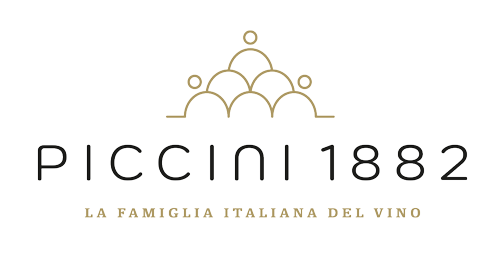SEES THE LIGHT OF THE LATEST PROJECT OF THE PICCINI 1882 GROUP, THE NEW CASOLE D’ELSA COOPERAGE DESIGNED TO MAKE THE MOST OF THE DIVERSE WINEMAKING TRADITIONS THAT HAVE MARKED THE COMPANY’S 140 YEARS AND THE NEW PROJECTS OF A REALITY IN FULL DEVELOPMENT.
An investment of about €850,000 to create a technically advanced facility, a cooperage that can serve as a “home” for all Piccini 1882 wines.
“I wanted to build this place so that it would become a gathering space for the family, for the children of Piccini 1882: our wines, the fruit of the grapes from our estates scattered all over Italy”-explains Mario Piccini, CEO of the group-“I wanted it to be a magical place where we could go on a real sensory journey between the warmth transmitted by our barrels and the notes and scents that only a cooperage is capable of transmitting. A real wine sanctuary capable of combining and synthesizing our commitment and work in all the territories where we are present and our values related to sustainability and circular economy of which we are very proud.”
Located in the winery’s new heart, the renovated Casole d’Elsa plant, the cooperage houses 50 hl and 30 hl barrels made from fine-fiber oak of the finest French quality. Fine wood that exhibits medium toast and intense aromatic conception and intended to house the wines of Piccini 1882’s multiple estates, both in Tuscany and beyond.
A constant temperature of 17 to 18 °C is guaranteed inside the cooperage throughout the year. Humidity levels, ranging from 75 to 80 percent, are strictly monitored and kept constant by spraying osmotized water. A special probe, deputed to detect humidity, activates the humidification system whenever the parameters fall below the 75% threshold. The setting up of the structure was also an opportunity to restore and reclaim the surrounding areas, also with a view to eco-sustainability. For example, the lakes adjacent to the facility have been upgraded to provide a water supply for irrigation, as well as providing the water reservoir for firefighting supplies. Staying with the theme of environmental sustainability, the facility was designed to minimize energy waste.
The panels that cover the coop, including the ceiling, were made of insulating materials capable of limiting heat loss by retaining high humidity and low temperatures. In particular, the perimeter walls feature a double chamber, designed to promote internal ventilation and thus prevent moisture stagnation and subsequent mold growth. Also installed in the center of the ceiling is a Solatube, a special refraction system that allows sunlight to illuminate the coop, providing the room with a constant source of light throughout the day.
“It is a unique place,” comments Mario Piccini, “entering here means entering the heart of our company, it means being able to reconnect and keep track of the path taken that led us to what we are today. It is truly a precious casket capable of representing us in both form and substance.”

Piccini 1882 Cooperage and Sangiovese,
Tuscany’s princely grape variety
Inside the new cooperage also rests Sangiovese, Tuscany’s princely grape variety.
“Certainly now the Piccini wine family has expanded to embrace some of the most vocated territories in Italy, such as Sicily or Piedmont, but our Tuscan roots remain strong and linked to Sangiovese. It is a grape variety that the winery wants to continue to enhance on a daily basis for its characteristics and versatility”-explains Mario Piccini.
Significant work carried out in the barrel cellar as well, with Marco Cerqua, Technical Director of Piccini 1882, as a reference: “Sangiovese is recognized for having a delicate variety of aromas to protect. Here, in this magical place, the barrels preserve the freshness of the grape variety, enhancing its aromas of morello cherry, cherry and black cherry. For aging, which takes place over medium to long periods of time, we have selected the best French oak barrels, the perfect habitat to allow the Sangiovese to evolve and find the ideal balance. The barrel, in fact, guarantees a constant supply of oxygen, by virtue of its micro-oxygenation, thus dampening the woody component and softening the impact of the toastiness.”
A long and patient work that also focuses on the work of the winemaker: “It is precisely the winemaker who has to find the ideal center of gravity so that the Sangiovese expresses its innate beauty, manifesting a recognizable fresh and young vein. Step by step we accompany and monitor the evolution of the wine, with tastings and detections, taking care not to disturb the Sangiovese’s peaceful sleep.”







